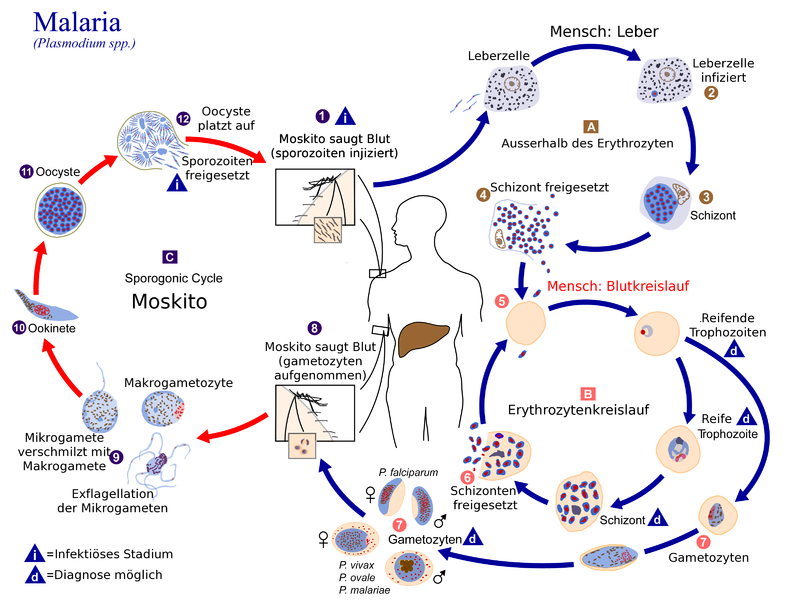Pathogenesis & Transmission
The causal agents that cause malaria are blood parasites of genus Plasmodium. Around 156 species of Plasmodium have been found, but only four species are considered as the true parasites of humans. They are: P.falciparum, P.vivax, P ovale and P. malariae.

The vector responsible for transmitting the disease is the genus Anopheles mosquito and only females are responsible of transmitting malaria. In order for their eggs to mature, they must take a blood meal by biting a host man at which time either they acquire initial infection ingesting gametocytes or inject the parasites to the host blood thus producing infections.
| Image Courtesy of Vestergaard Frandsen on Flickr under Creative Commons License: https://commons.wikimedia.org/wiki/File:5942_lores.jpg |
The malaria parasite life cycle can be divided into 3 stages and two hosts are involved.

Stage A: Exo-erythrocytic Cycle
The female Anopheles mosquito injects sporozoites into the blood of human host during the blood meal. The sporozoites then infect liver cells and become schizonts. Later on schizonts repture and release merozoites.
Stage B: Erythrocytic Cycle
This stage involves asexual proliferation in the erythrocytes. The released merozoites infect red blood cells. Now there are two possible pathways. Some merozoites may become trophozites and mature into schizonts and then release more merozoites (this is a ring cycle). Some may differentiate into gametocytes. Those gametocytes (male=microgametocytes; female=macrogametocytes) could be ingested by an Anopheles mosquito.
Stage C: Erythrocytic Cycle
Within the mosquito’s stomach, the microgametocytes penetrate the macrogametes and generate zygotes. The zygotes elongate themselves and become highly mobile, known as ookinetes. The ookinetes then invade the midgut wall of mosquito and become oocytes. The oocytes will grow and finally rupture and release sporozoites. The sporozoites then migrate to the salivary gland of mosquito and are ready to be released in the next blood meal.
|
Image courtesy of https://commons.wikimedia.org/wiki/File:Plasmodium_zyklus.png Image is in the public domain and thus free from any copyright restrictions. |
